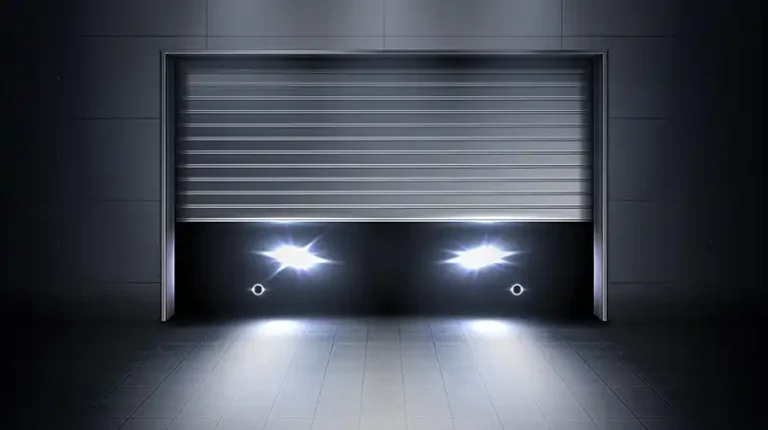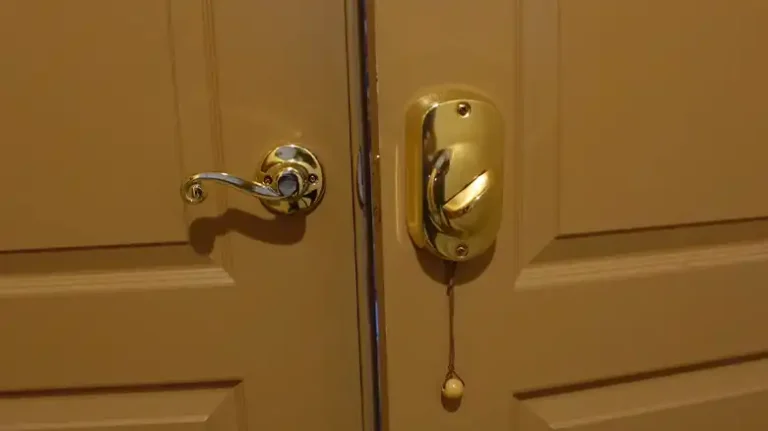How to Drywall Around a Garage Door? | Step-by-Step Guide
Drywall installation around a garage door requires careful planning and attention to detail. It’s important to work safely and follow proper techniques to ensure a professional and seamless finish. In this comprehensive guide, we will provide detailed instructions on how to drywall around a garage door. Whether you’re a seasoned DIY enthusiast or a beginner, this step-by-step tutorial will help you achieve excellent results and enhance the aesthetics of your garage. So let’s dive in and learn how to drywall around a garage door like a pro!

Preparation Before You Start The Process of Drywall Around a Garage Door
Before you begin the drywall installation, it’s crucial to prepare the work area and gather the necessary tools and materials. Here’s what you’ll need:
- Additional lights (optional)
- Drywall Drywall screws
- Screw gun & Drywall screws
- Spray foam insulation
- drywall knife
- Joint compound
- sandpapers
To begin, ensure the garage door is fully lowered and securely locked to avoid any unintended opening while working on the drywall installation. If the garage area is dimly lit, it is advisable to utilize some sort of light to guarantee proper visibility throughout the process. Before proceeding, carefully inspect the garage door and its hardware, familiarizing yourself with the different components and understanding their functionality.
Here’s How You Proceed Your Drywall Installation
After gathering all the necessary tools and preparing the garage for the drywall installation, follow the steps to drywall around your garage door:
Cutting and Fitting Drywall Sheets
Measure and mark the drywall: Transfer the measurements of the garage door opening onto the drywall sheets, marking the dimensions accurately.
- Cut the drywall: Using a drywall knife, score along the marked lines and snap the drywall sheet along the scored line. Cut any remaining paper with the drywall knife to complete the cut.
- Fit the drywall sheets: Place the cut drywall sheets against the garage door opening, ensuring they fit snugly. Make any necessary adjustments or trims to achieve a precise fit.
Attaching the Drywall
Proceed with the installation by affixing the drywall around the garage door support brackets. Use drywall screws spaced every four to six inches to securely attach them to the ceiling studs.
- Install the first sheet: Starting from one corner, position the first drywall sheet against the garage door opening. Secure it to the wall studs using drywall screws, leaving a gap of approximately 1/8 inch between the sheets for expansion.
- Continue with additional sheets: Repeat the process with the remaining drywall sheets, aligning the edges and securing them to the wall studs with screws. Stagger the seams between the sheets for added strength and stability.
- Cut out openings: Use a drywall saw or utility knife to cut openings for electrical outlets, switches, or any other necessary fixtures.
Spray foam insulation
Start with larger drywall pieces and work your way to the smaller ones, accommodating any small gaps near the metal hardware. Don’t worry, it’s a common occurrence.
- Step 1: Enhance both safety and code compliance by filling the gaps around the metal brackets with spray foam insulation. This step adds fire resistance and meets local building requirements.
- Step 2: Allow the spray foam insulation to expand and cure. Then, carefully trim any excess insulation that protrudes from the gaps, ensuring it aligns flush with the drywall’s surface using a utility knife.
Taping and Finishing
- Apply joint compound: Use a drywall knife to spread the joint compound over the seams between the drywall sheets. Embed drywall tape into the wet compound, pressing it firmly and smoothing out any wrinkles or bubbles.
- Coat the seams: Apply a second layer of joint compound over the embedded tape, feathering the edges to create a smooth transition between the drywall and the tape. Allow the compound to dry completely.
- Sand and repeat: Once the compound is dry, sand the seams and any uneven areas using a sanding block or sandpaper. Apply additional coats of joint compound as needed, sanding between each coat, until a smooth and seamless finish is achieved.
- Clean the sanded area: Take a moment to clean the sanded area, removing any residual dust or debris. A clean surface is essential for achieving a polished and professional look in the final step.
- Finish with texture and paint: If desired, apply texture to the drywall surface to match the existing walls in the garage. Once the texture is dry, prime and paint the drywall to complete the project.
By following these steps, you’ll be able to complete the installation of the remaining drywall in your garage, leaving you with a smooth, seamless, and visually appealing finish.
Final Touches For A Proper Installation
Give your drywall installation a final once-over by conducting a thorough inspection. Check for proper alignment of seams and ensure the surface is smooth and free from imperfections. To achieve a flawless finish, apply a second coat of joint compound over the taped seams and screw indentations. Grab a wider drywall knife, around 10 to 12 inches, and use it to feather the edges. This technique blends the compound seamlessly for a professional result. Allow the joint compound to dry completely. Patience is key here, as rushing this step may compromise the quality of the finish. Follow the recommended drying time provided by the manufacturer.
Frequently Asked Questions and Answers (FAQs)
How do you finish drywall around a door?
To finish drywall around a door, you will need to install drywall sheets around the door opening, ensuring a snug fit. Use joint compound to cover the seams and screw indentations, creating a smooth surface. Sand the area and apply additional coats of joint compound if needed, followed by sanding and priming before painting.
How do you hang drywall around a door opening?
When hanging drywall around a door opening, measure and cut the drywall sheets to fit the areas around the door. Attach the drywall to the studs using drywall screws, making sure to leave a small gap between the drywall and the door frame for expansion. Securely fasten the drywall, ensuring it is level and plumb, and then proceed with the finishing steps.
What kind of drywall is used in garages?
Typically, building codes require 5/8-inch thick drywall to be used in garages. This thickness provides increased fire resistance, which is important in a potentially hazardous environment like a garage. However, it’s always a good idea to check your local building codes to ensure compliance and safety.
Conclusion
Drywalling around a garage door demands careful planning, precise execution, and adherence to safety guidelines. By following the step-by-step instructions outlined in this comprehensive guide, you can achieve a seamless and professional-looking drywall installation. Take your time, work diligently, and consult local building codes for specific requirements. With patience and attention to detail, you’ll be able to transform your garage by drywalling around the garage door like a seasoned professional.
![[Explored] Can a Doorbell Work Without a Transformer?](https://doorsuggest.com/wp-content/uploads/2023/08/Can-a-Doorbell-Work-Without-a-Transformer-768x431.webp)



![[Explored] Can You Change a Lock without Changing the Door Knob?](https://doorsuggest.com/wp-content/uploads/2023/09/Can-You-Change-a-Lock-without-Changing-the-Door-Knob-768x431.webp)
![[Explained] What Router Bit for Door Hinges?](https://doorsuggest.com/wp-content/uploads/2023/10/What-Router-Bit-for-Door-Hinges-768x431.webp)